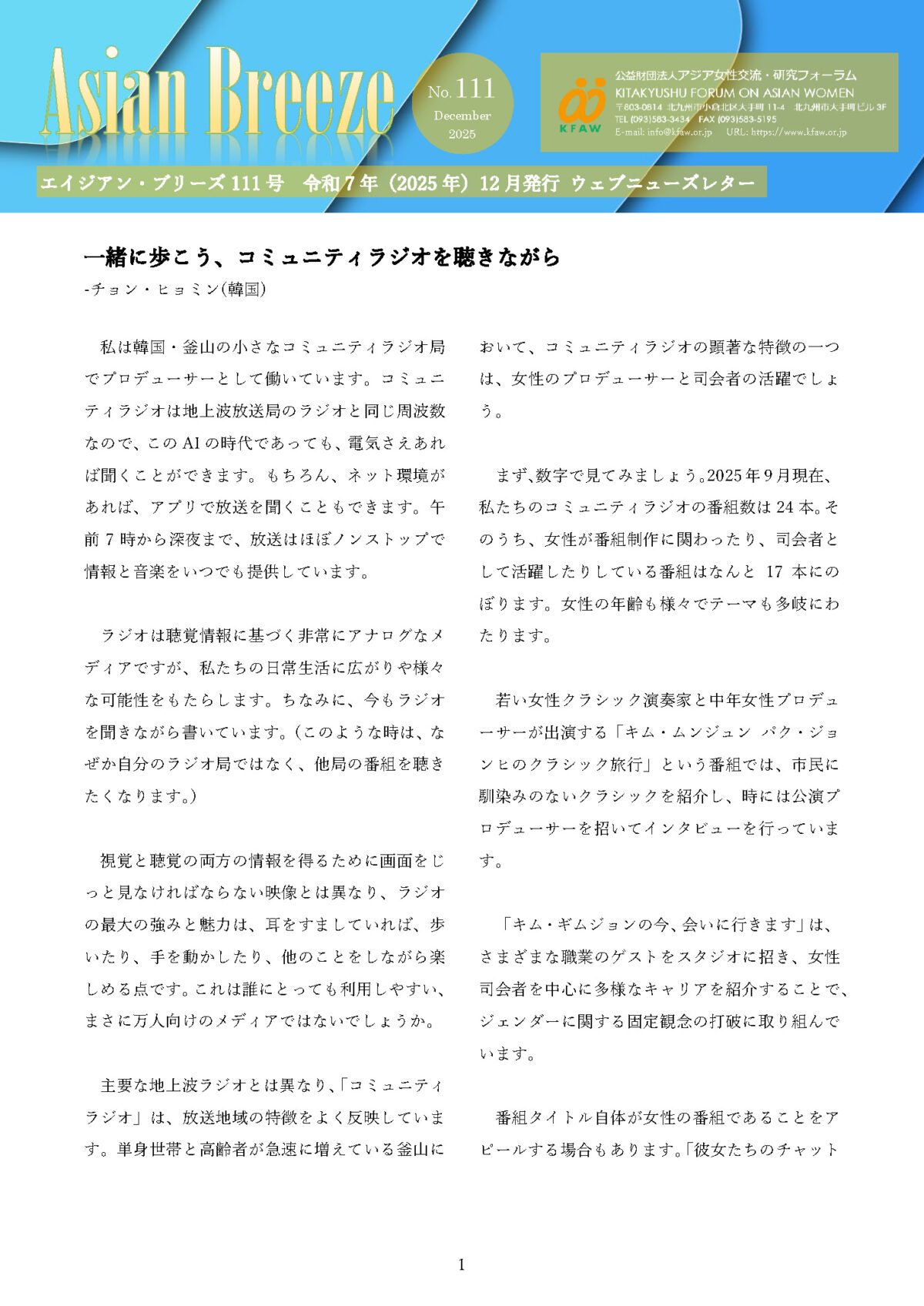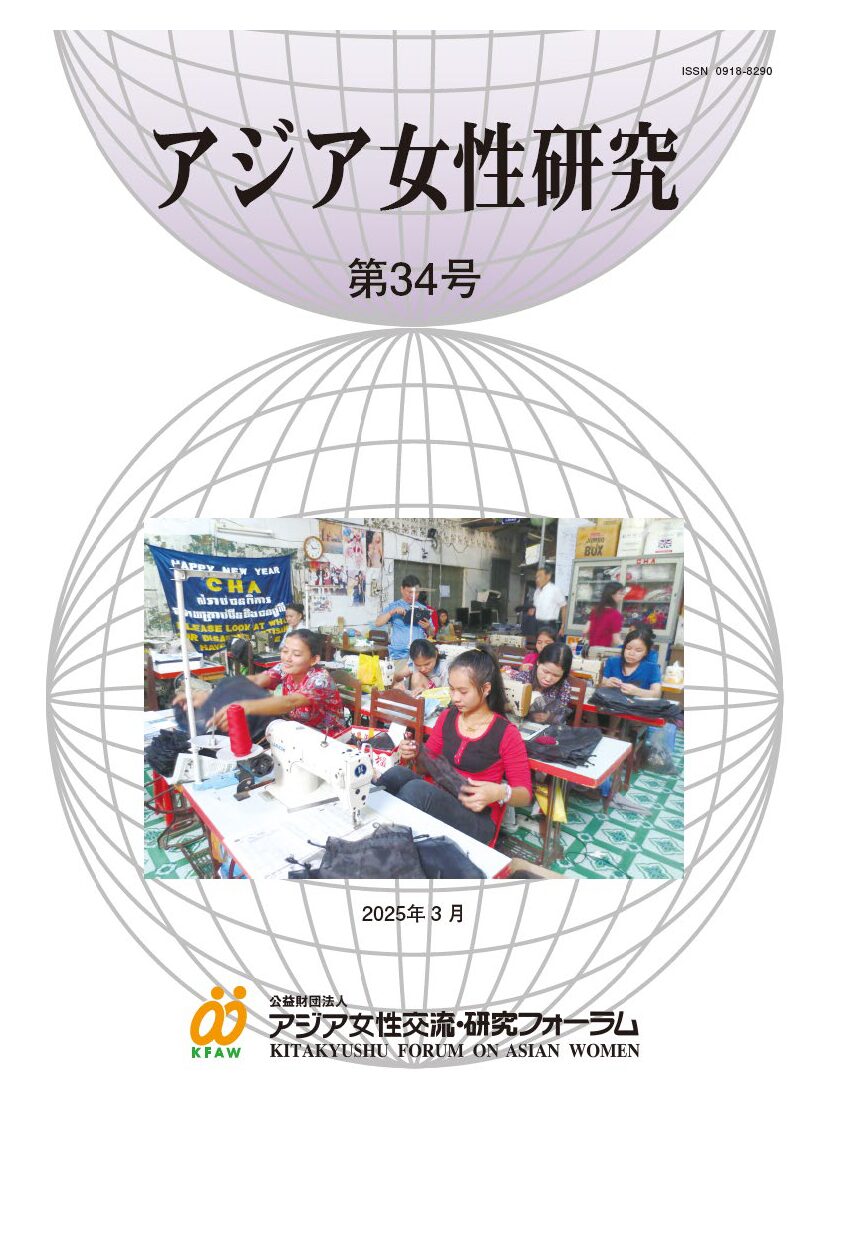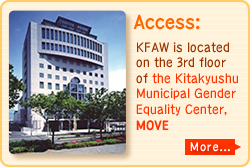The “Asian Breeze” is a newsletter published in English and Japanese by Kitakyushu Forum on Asian Women/KFAW. It covers a wide range of up-to-date topics such as gender equality, empowerment of all of women and girls, SDGs and environmental issues and so on, allowing you to see 'Asian women today'. We hope you will enjoy reading it.
Let’s walk together while listening to community radio
-Jeong Hyomin, South Korea
In Asian Breeze No. 111, Jeong Hyomin from South Korea reflects on her experience as a radio producer in Busan, reporting on the vibrant community radio scene where women play an active role. Deeply rooted in local identity, Busan’s community radio features numerous female producers and hosts, fostering intergenerational exchange through program creation.
No. 111, December 2025






